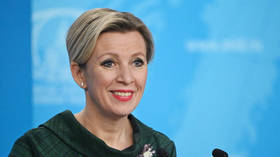Energy News Beat
Donald Trump has returned to the White House as President of the United States. A new chapter in history begins and the world is bracing for another four years of his signature unpredictability. But what can we expect this time around?
In 2017, the billionaire entered the presidency as a political outsider, navigating uncharted waters with zero experience and a constant barrage of opposition. Today, Trump returns as a seasoned player. Behind him stands a loyal Republican Party, a bizarre coalition of Wall Street elites, Silicon Valley magnates, MAGA stalwarts, conservatives, and anti-establishment figures. Even his opponents are finding it harder to land meaningful criticisms; his approval and disapproval ratings are now surprisingly even–a first in his political career.
A New Vision for America
This term, Trump’s MAGA agenda evolves from a mere slogan into what some call “new political thinking” for America. This is most evident in foreign policy, where his administration is planning the biggest shift since 1917.
At the heart of this transformation is Secretary of State Marco Rubio’s declaration that the liberal world order, cherished by past administrations, is dead. According to Rubio, this post-war framework has not only become “obsolete” but is now a weapon being used against the US. The Trump administration intends to abandon “abstract ideals” in favor of cold, self-serving pragmatism.
What does this mean in practice? It signals a dramatic pivot. Trump plans to trade Ukraine for a broader deal with Russia and reduce America’s commitments to Europe. The resources freed up from these moves will be redirected toward bolstering the Western Hemisphere, including attempts to bring Greenland, Canada, and the Panama Canal under US influence—if not outright control. Mexico, too, is in his sights. Domestically, high tariffs will be used to reindustrialize the US economy, aiming to reduce dependency on imports. These policies set the stage for what Trump views as the ultimate showdown: a confrontation with China, which he and his allies see as America’s greatest threat.
This strategy represents a kind of neo-imperialism, where America wields its massive military and economic power to secure its interests—no apologies, no illusions.
Domestic Challenges
But can Trump pull it off? His success depends heavily on domestic politics. For the new administration to succeed internationally, it must score major wins at home, particularly within the first two years.
One area Trump is betting on is immigration. His administration plans to execute the largest deportation of illegal immigrants in US history—a move designed to energize his base and score quick political points. Another priority is resolving the Ukrainian conflict within his first 100 days. These early victories, coupled with a stable or improving economy, could set the stage for Republicans to dominate the 2026 midterms.
However, Trump still faces the obstacle that dogged him during his first term: the so-called liberal “deep state.” This time, he appears ready to fight back. Cabinet appointments suggest the first battles will target the Pentagon, FBI, National Intelligence Agency, Department of Justice, and State Department. Brendan Carr, the new head of the Federal Communications Commission, has indicated he will crack down on liberal media. Trump has even turned his gaze to Hollywood, appointing Sylvester Stallone, Mel Gibson and John Voight as “special envoys.” Though it may sound absurd, these moves are part of a broader strategy to gain control over all spheres of public life.
If successful, these steps could fundamentally reshape America. Yet, even with early victories, the road ahead will be fraught with social unrest and internal conflicts. The “disadvantaged” will resist Trump’s agenda, while divisions within his own coalition could deepen. For example, disagreements over immigration policy are already brewing. Newcomers to the MAGA movement, such as Elon Musk, want to retain access to global talent, while veteran supporters demand stricter immigration enforcement without exceptions. These tensions could prove to be stumbling blocks.
The Geopolitical Gamble
Trump’s foreign-policy gambit hinges on his ability to withdraw US commitments from Europe and redirect attention to China and the Americas. His plans to impose high tariffs and revive domestic manufacturing may sound ambitious, but their actual effectiveness remains uncertain. For instance, trade with Russia is so limited that tariffs on Russian goods would have little to no impact. Meanwhile, claims that the Russian economy is failing are far from accurate; in December, Russia recorded record tax revenues exceeding $40 billion.
At the same time, Trump’s approach to Europe–specifically his willingness to cut ties with NATO allies–raises questions about whether the US can maintain its global influence while pursuing such an isolationist agenda. History suggests that retrenchment often creates vacuums that adversaries are eager to fill.
Trump’s broader goal of restructuring global power dynamics is ambitious but fraught with risks. His plans hinge on the assumption that the US can act unilaterally without facing significant pushback. Whether this gamble pays off remains to be seen.
The Legacy Question
If Trump manages to deliver on his promises without plunging the US into chaos, he will undoubtedly leave a lasting mark. However, his presidency will likely end before the full realization of his vision. The task of consolidating and expanding Trump’s “new America” will fall to his successor–whether it be J.D. Vance, Ron DeSantis, or another rising star.
Do I think this vision will come to pass? Frankly, I’m skeptical. Too many stars need to align for Trump’s plans to succeed, and history is rarely so accommodating. Still, in politics, anything is possible.
One thing is certain: Trump’s second term will be anything but dull. The world will watch as the US navigates a new chapter under its most unconventional leader.
This article was first published by the online newspaper Gazeta.ru and was translated and edited by the RT team
Source: Rt.com
We give you energy news and help invest in energy projects too, click here to learn more
Crude Oil, LNG, Jet Fuel price quote
ENB Top News
ENB
Energy Dashboard
ENB Podcast
ENB Substack
The post Trump’s return to power: Revolution or repeat? appeared first on Energy News Beat.


















